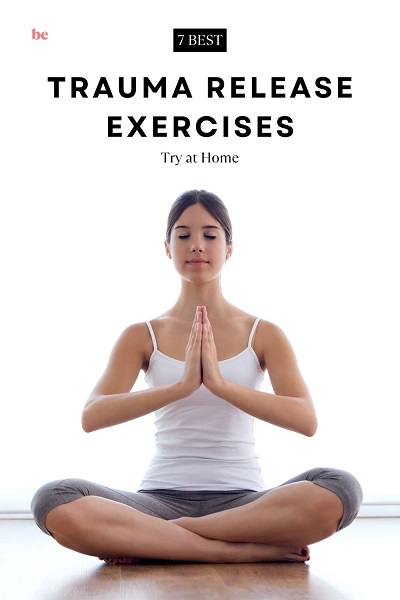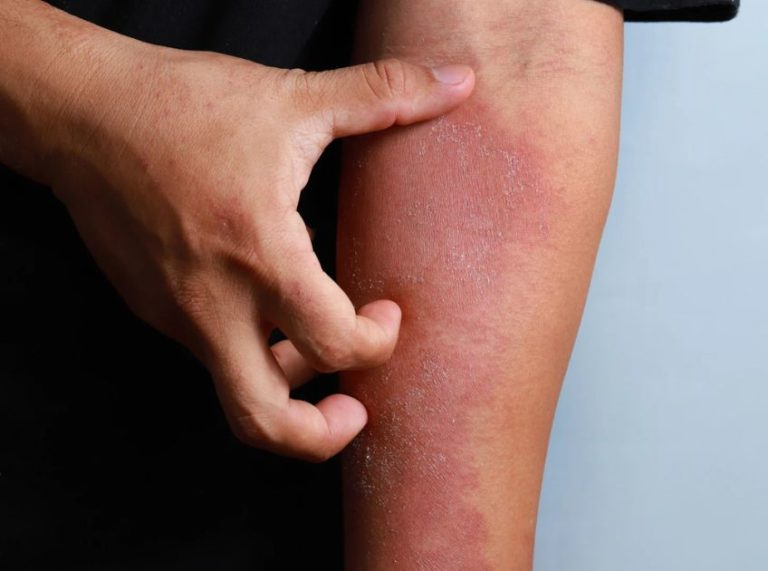
Important: This article is for informational purposes only. Please read our full disclaimer for more details.
Trauma doesn’t just live in the mind—it anchors itself deep in the body. Whether it stems from emotional distress, physical abuse, or chronic stress, unprocessed trauma can show up as tension, fatigue, anxiety, or even chronic pain. Fortunately, certain body-based exercises can help unlock and release these stored emotions. In this expert guide, we’ll explore science-backed trauma release exercises that can empower your healing journey.
How Trauma Gets Trapped in the Body
Trauma activates our fight-or-flight response. When this natural stress response isn’t discharged properly, the body holds onto the energy. According to trauma expert Dr. Bessel van der Kolk, author of The Body Keeps the Score, traumatic memories can stay stored in the nervous system, muscles, and fascia. This is why somatic (body-based) approaches are essential for full recovery.
Studies published in the Journal of Traumatic Stress and Frontiers in Psychology highlight that trauma affects not only emotional regulation but also physiological systems like heart rate, respiration, and muscle tension. Releasing trauma, therefore, must involve both the mind and body.
7 Transformational Exercises to Release Trauma from the Body
Releasing trauma isn’t about forgetting what happened—it’s about freeing the body from the physiological grip of that experience. These seven exercises are designed to help you gently process and release stored trauma. Backed by science and therapeutic practices, each method works by restoring nervous system regulation, releasing muscle tension, and enhancing mind-body awareness.
1. Tension & Trauma Releasing Exercises (TRE)
What It Is
TRE is a revolutionary set of seven exercises developed by Dr. David Berceli. It activates the body’s natural neurogenic tremors—mild muscle shaking that helps release deep patterns of tension and trauma.
Why It Works
When animals survive a threat, they often shake to discharge excess energy. Humans, conditioned to suppress this response, can carry the undischarged stress in their muscles and fascia. TRE safely reawakens this natural release mechanism.
Scientific Insight
A study published in the International Journal of Environmental Research and Public Health (2020) found that TRE significantly reduced symptoms of anxiety and PTSD in participants over time (1).
How to Practice
Start with wall sits, leg lifts, and pelvic tilts to fatigue major muscle groups. Then, lie on your back with knees bent and feet together. Allow your body to shake gently. The tremors often start in the legs and move upward.
Tip: Start with practice under guidance. Many certified TRE providers offer virtual sessions.
2. Somatic Shaking (Neurogenic Shaking)
What It Is
This is a free-form practice where you rhythmically shake your body to release energy and regulate the nervous system. Inspired by indigenous healing rituals and somatic therapy.
Why It Works
Shaking disrupts stuck energy patterns, helps release adrenaline and cortisol, and stimulates the parasympathetic (rest-and-digest) response.
Scientific Insight
Although limited in Western clinical trials, somatic shaking parallels findings from animal behavior studies (2), where tremoring acts as a trauma resolution tool (Levine, Waking the Tiger).
How to Practice
Stand with feet hip-width apart. Let your knees bounce gently. Gradually shake your legs, arms, shoulders, and even your jaw. Add breath and sound if it feels natural.
Tip: Do it for 3–10 minutes with music or in silence. Follow with stillness and notice the after-effects.
3. Trauma-Informed Yoga
What It Is
A gentler form of yoga designed to promote safety, body autonomy, and emotional resilience. It avoids hands-on adjustments and encourages choice.
Why It Works
Trauma often causes disconnection from the body. Trauma-informed yoga helps reestablish a sense of control, grounding, and self-trust through mindful movement and breath.
Scientific Insight
A 2014 study in the journal Psychological Trauma found trauma-sensitive yoga reduced PTSD symptoms significantly in women with complex trauma, offering benefits equal to or better than talk therapy (3).
How to Practice
Focus on slow, simple poses like child’s pose, cat-cow, or supported bridge. Move with breath awareness and choose modifications that feel comfortable.
Tip: Avoid fast-paced flows. Classes labeled “trauma-sensitive” or “restorative” are ideal.
4. Deep Diaphragmatic Breathing
What It Is
A breathing technique that activates the diaphragm to shift the body from a state of stress to a state of calm.
Why It Works
Deep breathing helps deactivate the sympathetic nervous system and stimulates the vagus nerve, a key player in trauma recovery.
Scientific Insight
According to a 2017 study in Frontiers in Psychology, slow diaphragmatic breathing improves heart rate variability (HRV), which correlates with greater emotional regulation and reduced stress (4).
How to Practice
Lie down or sit comfortably. Place one hand on your chest, one on your belly. Inhale through your nose for 4 seconds, letting your belly rise. Hold for 4, exhale slowly for 4, hold again for 4. Repeat for 5–10 minutes.
Tip: Pair with calming music or essential oils like lavender to deepen the effect.
5. Progressive Muscle Relaxation (PMR)
What It Is
A body-based technique that systematically tenses and releases different muscle groups to reduce physical tension and increase body awareness.
Why It Works
Trauma often creates chronic muscular contraction. PMR helps you recognize and consciously release it, enhancing a sense of bodily safety.
Scientific Insight
PMR has been shown to significantly reduce anxiety and depression in trauma survivors (5).
How to Practice
Start at your feet—tense the muscles for 5 seconds, then release. Move upward: calves, thighs, hips, abdomen, hands, arms, shoulders, neck, and face.
Tip: Guided PMR recordings are available online to help with pacing.
6. Guided Somatic Meditation
What It Is
A meditative practice that emphasizes body awareness over cognitive processing. Often includes body scanning, sensing, and breath tracking.
Why It Works
Helps reconnect with areas of the body affected by trauma, especially where dissociation or numbness occurs.
Scientific Insight
Somatic meditation fosters interoception—the brain’s awareness of internal body signals, which is often impaired by trauma. Increased interoception improves emotional regulation (6).
How to Practice
Sit or lie comfortably. Bring attention to different parts of your body, starting from your toes to your head. Notice sensations, tension, temperature, or lack thereof, without judgment.
Tip: Use apps like Insight Timer or YouTube channels with trauma-informed somatic meditation.
7. Grounding Through Nature Walks (Earthing)
What It Is
Mindful walking or direct contact with nature—especially barefoot walking on soil, sand, or grass—to discharge stress and reconnect to the present.
Why It Works
Nature exposure helps soothe the nervous system and restores a sense of belonging and peace. Walking mindfully also improves circulation and sensory regulation.
Scientific Insight
A 2015 study in the Journal of Inflammation Research showed that direct contact with the Earth can reduce inflammation and improve sleep, two common trauma-related issues (7)(8).
How to Practice
Walk slowly in a natural setting. Focus on how your feet feel on the ground, how the air smells, and how the sun feels on your skin. Try removing shoes for added effect (if safe).
Tip: Leave your phone behind or in silent mode to stay fully present.
Building a Consistent Trauma Release Practice
To make trauma release exercises effective:
- Start small: 5–10 minutes a day is enough at first.
- Create safety: Choose a calm space where you feel secure.
- Stay present: Focus on body sensations—not judgment or over-analysis.
- Journal your progress: Reflecting on feelings can deepen awareness and healing.
Everyone’s trauma story is different, so listen to what your body needs and respond gently.
Knowing When It’s Time to Seek Professional Help
Self-practices are powerful, but sometimes, trauma is too overwhelming to navigate alone. Consider professional support if:
- You feel emotionally flooded or shut down after exercises.
- You experience flashbacks or panic attacks.
- You have a trauma history involving abuse or severe neglect.
- You’re unsure what you’re feeling or how to process it.
A somatic therapist, trauma-informed yoga teacher, or licensed trauma counselor can guide you safely.
Ready to Heal? Here’s Your Next Step
Releasing trauma is a gradual process—there’s no quick fix. What matters is your commitment to feeling safe in your body again. Pick one or two exercises that resonate and practice them regularly. Your body already knows how to heal—these methods simply unlock that natural intelligence.
Frequently Asked Questions (FAQ’S)
Q1. How often should I do trauma release exercises?
A. Start with 2–3 times per week and increase as you build comfort. Consistency is more important than intensity.
Q2. Can trauma release exercises trigger emotional reactions?
A. Yes. You might feel sadness, relief, or even agitation. This is part of the release process. Pause and breathe if it gets overwhelming.
Q3. Are these exercises safe for everyone?
A. Most are safe when practiced gently, but individuals with severe trauma or medical conditions should consult a professional first.
Final Thoughts: Your Body Is Your Ally
Trauma may have disrupted your sense of safety, but your body holds the map to healing. These seven exercises offer a pathway back to peace, presence, and power. Be patient, stay curious, and remember—healing is not linear, but every step counts.
















